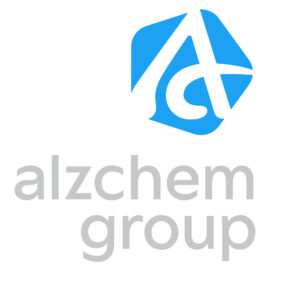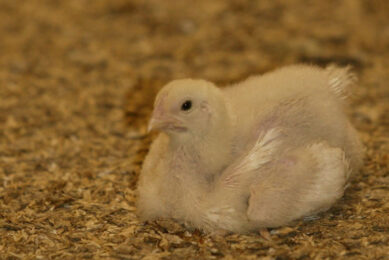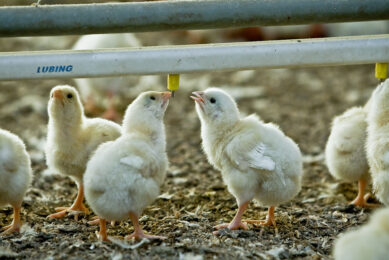GAA efficiently optimises energy metabolism of breeders

A smoothly-running cascade of metabolic processes, of which the majority is energy-dependent, is the basis for efficient and healthy poultry production. Guanidinoacetic acid (GAA) delivers the unique opportunity for broiler producers to improve their animal’s cellular energy metabolism: not only in broiler chickens, but as early as in the breeder stock.
The role of guanidinoacetic acid in cellular energy metabolism
Metabolism, first of all, is the coupling of substrate catabolism (nutrient breakdown) and anabolic processes (e.g., protein synthesis). Muscle protein synthesis, in particular, is of major importance for growing broilers. This process, amongst others, is continuously consuming adenosine triphosphate (ATP). Adenosine triphosphate, hence, needs to be constantly replenished. To this, an inorganic phosphate group is added to adenosine diphosphate (ADP) via the phosphate carrier (phospho-) creatine (Crea).
Thus, Crea is vital for keeping the “ATP-ADP-battery system” of the cell running, especially in times of high energy demand. And not least because of its ability to transport energy, in form of phosphocreatine to the place where it is needed.
Consequently, optimising cellular energy metabolism is inevitable to reach the full efficiency potential of modern poultry. This is the point, where GAA plays the key role. Guanidinoacetic acid, supplemented to poultry feed, allows for increasing cellular Crea concentrations, since it is the sole endogenous precursor to Crea. Guanidinoacetic acid is endogenously converted to Crea and, hence, boosts cellular energy metabolism.
Guanidinoacetic acid is the unique possibility to increase cellular Crea concentrations, since plant-based poultry feed does not contain any Crea, and animal protein sources vary highly in their Crea concentrations. Finally, Crea is not stable during modern feed processing.
GAA and Creatine – from feed to breeder hen to more vital broiler hatchlings
Scientific research showed that supplementation of 0.15% GAA (over 15 weeks) to the feed of broiler breeder hens (Cobb 500, 47 weeks of age at start) increases egg Crea concentrations as compared to the non-supplemented control. This effect was more pronounced in the yolk than in the albumen (increase in 61% and 26%, respectively). An increase in yolk Crea concentration is especially beneficial for the growing embryo, since the yolk is of primary (nutritional) relevance during embryonic development. Additionally, the breeder hen’s metabolism was relieved in a way that Crea gene expression was down-regulated and, thus, those resources could then be used for other metabolic processes.
Follow-up research provides fundamental findings on the demand and supply of energy sources (Crea and glycogen) during embryonic growth. It is known that towards the end of incubation (after embryonic day 19), the oxygen availability becomes limiting, and the embryo’s metabolism needs to change from lipid oxidation towards anaerobic catabolism: glycogen stores that have been built up prior to embryonic d 19 now serve as primary energy source to deliver glucose and amino acids are broken down and transformed into glucose as well. The current study, however, clearly showed that glycogen stores are depleted towards hatch, whereas Crea serves as the available energy source shortly prior to hatch until chick placement – a highly demanding phase for the developing metabolism. This was illustrated by both Crea and glycogen analyses in breast muscle, liver and extra-embryonic yolk sac tissue at different time points during embryonic development, at hatch and at chick placement.
Guanidinoacetic acid, as sole precursor to Crea, obviously optimises the broiler (hatchlings) energy equipment in ovo and at hatch by supplementing it to the breeder hen’s diet. Finally, this is transferred into improved hatchability and post-hatch performance of broiler chickens, as it has been shown in various research studies. An optimal dose rate, considering economical benefits, was identified at 0.08% GAA supplemented on top of complete feed.
Guanidinoacetic acid added to the diets of breeder hens, first optimises energy metabolism of breeder hens. This is expressed by an increased Crea synthesis and subsequent transfer to the nutritional reserves of growing broiler embryos. Second, the growing embryos can make use of a readily available energy resource instead of costly nutrient breakdown to generate energy compounds. These nutrients would then be missing for other processes, such as amino acids for protein synthesis.
The full significance only becomes apparent at time of hatch, which finally results in higher returns for the poultry producer.
References are available upon request.




